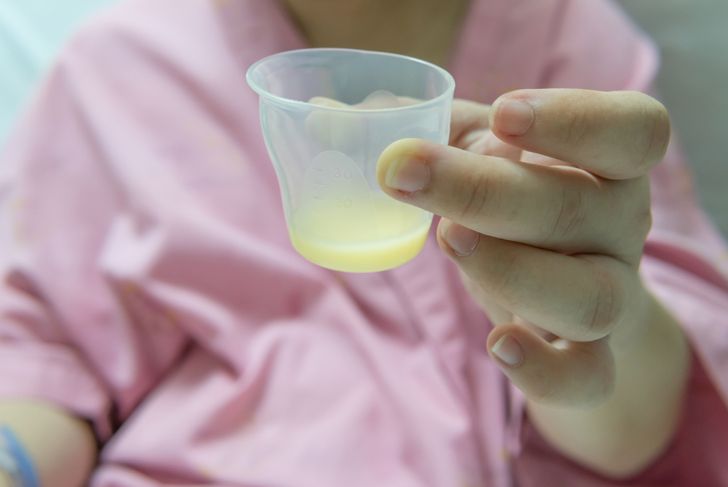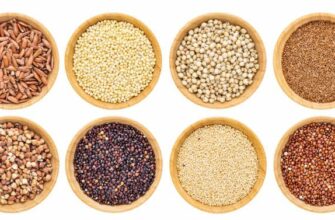Breastfeeding provides many health benefits for both the mother and the baby. For babies, breast milk is considered an ideal source of nutrition for the first few months of their lives, as it provides all the nutrients needed for growth and development.Foods, prescription medications, supplements, herbs, and certain conditions can change the normal color of the milk. In many cases, it’s not cause for concern.
Colostrum
The first breast milk, or colostrum, is highly concentrated and nutritious. The new mothers produce colostrum for up to 5 days after giving birth. It is thick, sticky and, usually, yellow; in some cases, it can become darker, with an orange tint, and others have a lighter color.A clear, watery colostrum is also considered normal. The yellow or orange color is due to its high content of vitamin A in the beta carotene form.
The Mature Breast Milk
After colostrum, there is a so-called “transitional” stage for about two weeks, when the color of the milk changes from yellow to white as it becomes mature breast milk. Although mature milk is typically white, it is also considered normal if it has a blue, tan, cream, or yellow tinge.Refrigeration can also affect the color of the milk.
Pink Milk
The color of the milk can change based on the foods eaten by the mother. For example, pink milk has been linked with the consumption of beets. Interestingly, there is a case report describing a baby who had urine pink each time the mother drank an orange juice containing artificial colors.Taking the prescription drugs clofazimine, rifampin, rifabutin, rifapentine, and some infections can also turn the milk pink.
Red Tinted Milk
Red-tinged milk can be caused by red foods or beverages containing artificial red color. Besides foods, blood from cracked nipples or areolas can cause this coloration.A condition called rusty pipe syndrome may cause brownish-red breast milk. This ailment develops due to rupture of the small blood vessels in the breast and it takes three to 7 days before the color of the milk returns to normal.
Orange Milk
Red, orange, and yellow vegetables contain high amounts of carotenoids — plant compounds that have the potential to cause orange-tinted milk, especially when consumed in excess.In addition to changing the milk color, these compounds can also cause your baby’s skin to temporarily adopt an orangish tint.
Green Milk
Although research is limited, some scientists note that there are some documented cases of green-tinged milk from consuming spirulina, kelp, and other herbal supplements.Iron supplements, the prescription drug propofol, and green dyes from foods have been linked with greenish breast milk.
Black Milk
The antibiotic minocycline is well known to cause black discoloration of different tissues, including bones, eyes, mucous membranes, and thyroid. There are also a couple of cases of black milk described in a research study.Doctors recommend avoiding this drug in the oral form during breastfeeding due to a risk of dental staining and decreased bone growth.
Brown Milk
The drug minocycline can cause black or brown milk. While doctors don’t recommend this drug orally, the topical application of it for acne and other skin conditions appears to be safe for the baby.The presence of traces of blood can also turn breast milk brown or cause brown streaks.
When To Seek Medical Advice
Changes in milk color are often related to food, and these changes generally do not affect the mother’s or the baby’s health. However, seek medical advice if your milk consistently has a strange color that seems unrelated to diet, if the baby is crying during feeding, or if there are unusual changes in the texture or smell of the milk.If the milk is tinged with blood for several days, a consultation could help find the underlying cause. Lactation specialists can answer questions related to breast milk colors and advise when to seek medical care.
Considerations
If you decide to talk to a doctor about breast milk colors, keep a food diary for a few days, and also bring a complete list of supplements and prescription drugs you’re taking during lactation.In some cases, the healthcare provider may recommend further investigations to rule out an infection or other conditions that affect milk color. Overall, the prognosis is good, as most cases are due to dietary changes.

 Home
Home Health
Health Diet & Nutrition
Diet & Nutrition Living Well
Living Well More
More

















